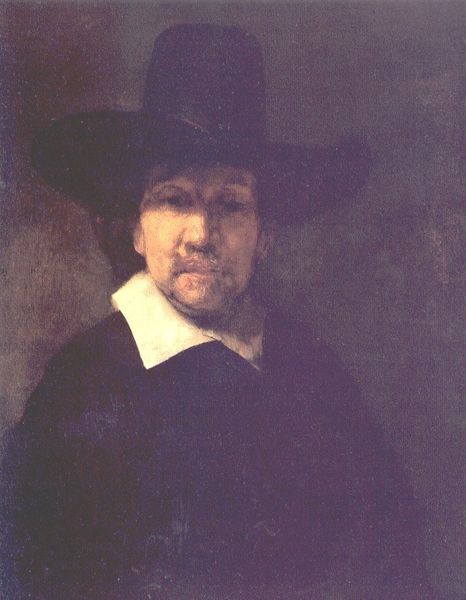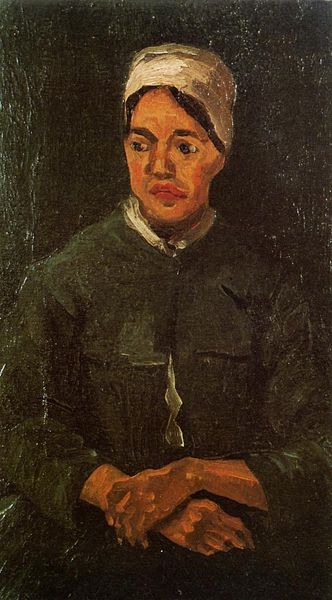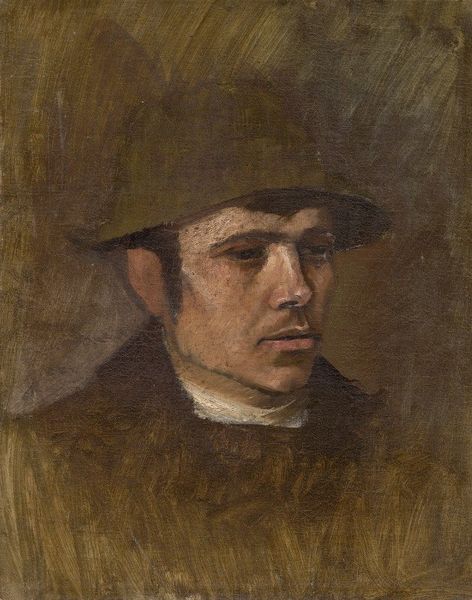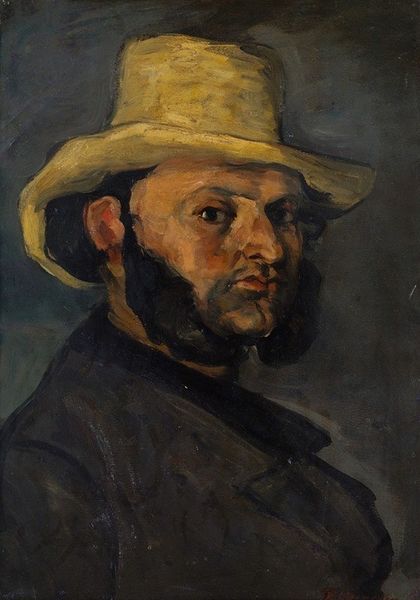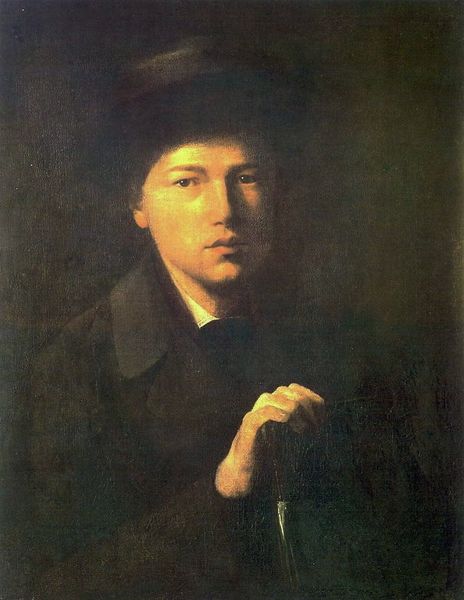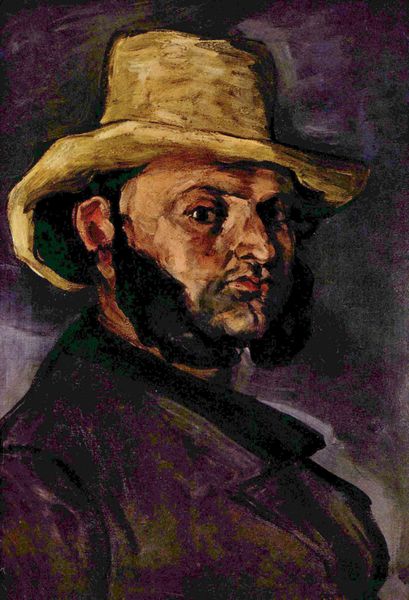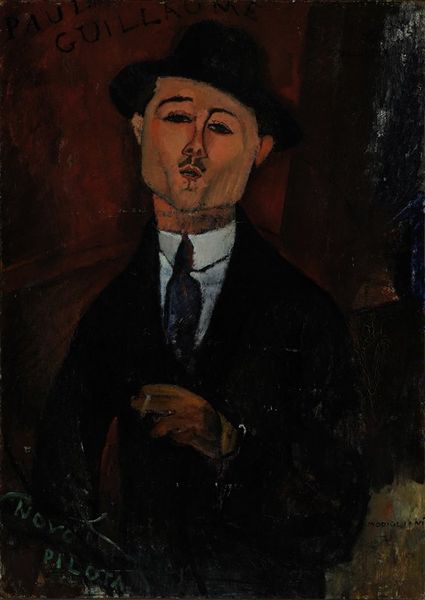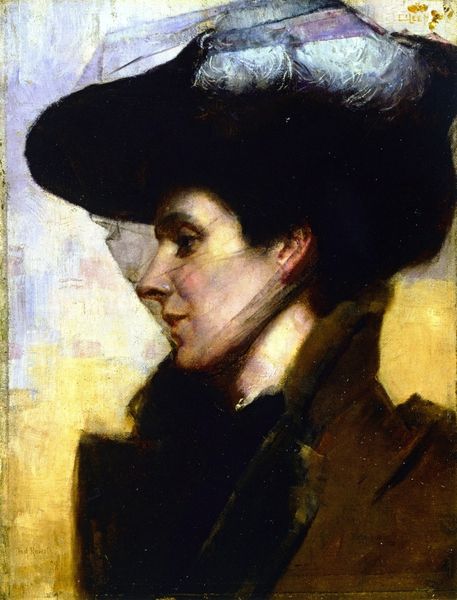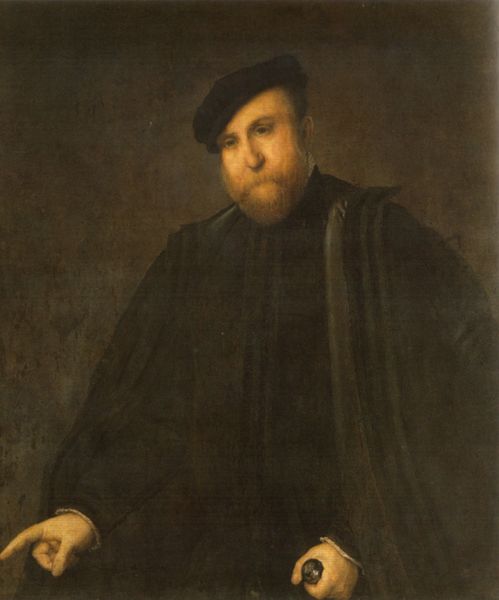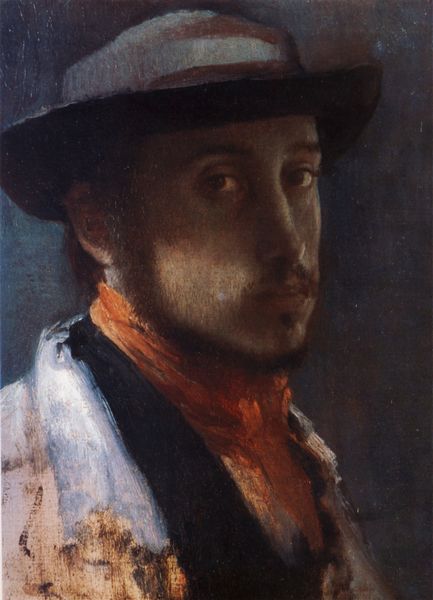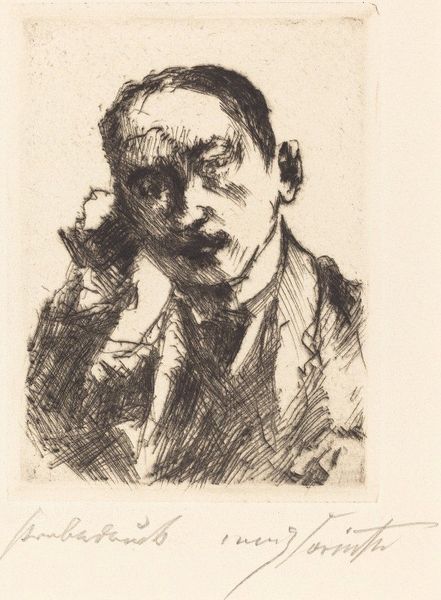
painting, oil-paint
#
portrait
#
painting
#
oil-paint
#
german-expressionism
#
figuration
Copyright: Public domain US
Editor: Here we have André Derain’s "Portrait II", painted in 1920 using oil. It’s striking how the muted colors give it this melancholic mood, almost like an old photograph. What can you tell me about how this piece fits into the broader art landscape of its time? Curator: Well, German Expressionism, while preceding the Dada movement, provided fertile ground for questioning societal norms and individual psychology. The raw emotionality you perceive aligns with that Expressionist tendency. But also notice how Derain presents the sitter within the specific conventions of portraiture - what do those artistic choices tell us about the image’s intended audience, its cultural function? Editor: I see what you mean, the subject's clothing feels quite ordinary despite the slightly surreal treatment of form. Do you think this normalcy contrasts or even clashes with some of the distorted features, like his oddly shaped right eye? Curator: Precisely. Think about who would be commissioning or viewing such a portrait in 1920. The disruption you sense can be seen as reflecting broader anxieties after the first World War and what it meant for European social order. Consider too, how public expectations shaped artists’ decisions to both embrace and challenge those same aesthetic codes. How does the painting’s original exhibition context help us understand its reception? Editor: So it's less about Derain expressing purely personal feelings and more about a commentary on the mindset of that period? That's fascinating. I will consider that when writing the blurb about it for the museum guide. Curator: Exactly. Exploring that dynamic tension between artist intention, societal expectation and audience response reveals so much. Editor: That context makes the painting so much richer, I'll definitely remember that!
Comments
No comments
Be the first to comment and join the conversation on the ultimate creative platform.
